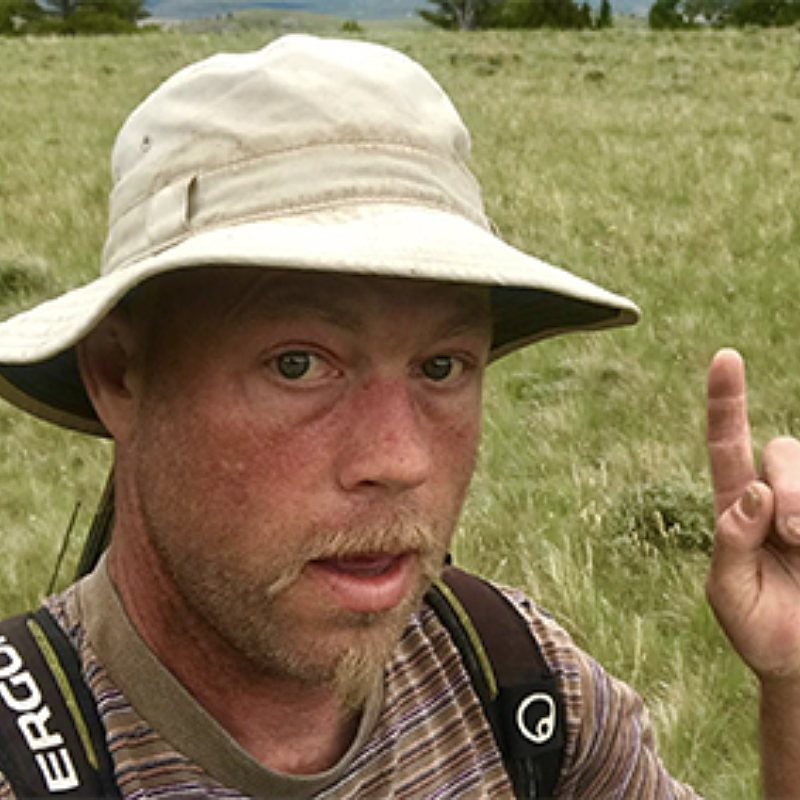
Always Take the High Road

Words BY:
Tim Hawke

Illustration BY:
Matty Clark
I CAN STILL see the whole thing in my head. It’s a memory that has engraved itself into my grey matter. It seemed like the fall lasted for several minutes, but the reality is probably more like 20-seconds. He tried to dig his hands into the hard snow while sliding backward down the top of the couloir, but he rapidly picked up speed. Then he tumbled backward and bounced off one of the cliff walls. After that, his body went limp as he barrel-rolled like a log further down the steep chute. There was a very large boulder poking through the snow, right down the middle of the fall line, and he hit it squarely, sending him flying into the air. I’m pretty sure that’s when his broken ribs punctured his spleen and one of his lungs. The last 200 yards was a light dusting of snow over sharp limestone scree, which gave him a multitude of lacerations and a shattered elbow.
Watching the horror and brutality of our friend tumbling down the Great Northern Couloir (The Great One), left us frozen in complete shock. We were sure that he was dead. No one could have survived that plunge. Then we heard his weak and desperate pleas for help and this was well before cell phones, so one of us ran for assistance while my other friend and I tried to make our way down to our mangled brother to try and stabilize him.
It took four hours to get a helicopter up there. They strapped him to a bodyboard and dangled him 20 feet below the bird for the 30-second flight down to Fairy Lake. He spun like a top the whole way down. Adding more insult to injury, he then endured a long and bumpy ambulance ride down Fairy Lake road to Bridger canyon, then on to the hospital in Bozeman.
He was in surgery for 8 hours. They opened him up from his crotch to his sternum to untangle his organs and remove his spleen. He survived, but he will never be the same.
Looking back, the day started out just fine. A crisp and sunny October day. We had Sacajawea peak to ourselves, but here’s what went wrong: we were young and barely experienced in mountaineering, we were convinced that we were invincible, and even blazed up a huge spliff of Mexico’s finest brick weed on the summit, seeds and all.
Like many young men, we lacked humility and situational awareness. But we were very gung-ho and determined to go straight up and down every mountain in Montana. We had a lot more to learn.
One would suspect that we had learned our lesson. One would be wrong. We three survivors rapidly purchased crampons and a sturdy ice ax, so we could feel a false sense of safety as we turned up our alpine frenzy to 11. How no one ever died is beyond me.
The mountains are beautiful but they are not worth dying for.
- Greg Child

It took me years to realize how fortunate I was to grow up in Montana and even longer to understand just how balls-out reckless my friends and I were. Our first descents in the Beartooth mountains were on plastic sleds. We would take off a bootlace and lash the sled to our clothing, so it wouldn’t end up in the valley bottom as we inevitably somersaulted down a headwall.
I’ve come to realize that Montana boys (and girls) are pretty crazy. If that’s true, it’s partially due to the playground in our backyard. But it’s also a gym that has produced some amazing athletes: Alex Lowe, Scot Schmidt, Tom Jungst, Joe Josephson, Parkin Costain, Pat Hinz, Tanner Hall, and Heather McPhee. These are all world-class mountain roaming legends. And I’m sure that they would all tell you that if Montana’s mountains taught them anything, it was humility.
Put aside your pride, Set down your arrogance, And remember your grave.
– Ali ibn Abi Talib
I’m sure a lot of you have a similar tale, and hopefully, it didn’t end with the loss of a friend’s life. I’ve come way too close to a permanent dirt nap on dozens of occasions. And when it comes down to it, I would very much prefer to continue my adventurous life than to die doing what I loved. There’s still too much to see, other mountains to climb, new trails to ride, and roads I’ve never driven.
There’s been a lot of untimely endings for some incredible humans in my valley as of late. Good people, with plenty of epic adventures still in front of them. It’s pretty brutal to watch what happens to the grieving friends who were present to witness a life taken too soon. It’s a jagged scar on your heart that lingers until its final beat.
I’m not about to say that those people were being reckless or overly confident, though. Many of them were very experienced skiers, climbers, or at least understood the risks of their last alpine undertaking. The mountains have no ill will, but they are also far beyond offering a safe passage. We don’t go there for an easy stroll. We enter the inflexible montane because it is difficult.
Getting to the top is optional. Getting down is mandatory.
- Ed Viesturs

The three basic types of conflict in literature usually boil down to Man vs. Man, Man vs. Himself, and Man vs. Nature. I tend to take issue with the latter, though. When playing in the mountains, I’m not struggling with the landscape. Some of the critters might be after me, but the dirt and rocks could care less about my exploits. Pushing my mountain bike up a steep loose trail doesn’t amount to a battle with the route. The conflict is simply with my physical abilities and willpower. I’ve scrambled up many of Montana’s highest mountains, but I haven’t conquered a single one. They will still be standing right there for millions of years after I have become worm food.
And just when I’m feeling proud of myself for scrambling up to a spot where surely no human has ever been, I see some obsidian flakes in the dirt. A solemn reminder of a hunter who scaled these mountains in moccasins and enjoyed the same view while making tools for an ancient hunt possibly thousands of years ago. It’s very humbling.
Montana’s high country (and deserts) have taught me so many valuable lessons. How strong I can be. How weak and fragile I am. How to not sweat the small stuff. How to pay attention to details. And most importantly, they have made me unpretentious.
I guess my point would be to enter the wilds with some respect and humility. Know your limits and those of your travel buddies. Situational awareness and an extra layer will get you a lot further in the long run than an overinflated sense of self.
 MORE FROM BOMB SNOW
MORE FROM BOMB SNOW




